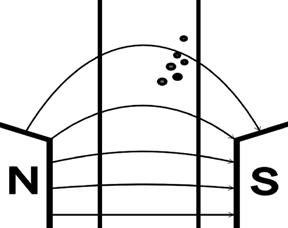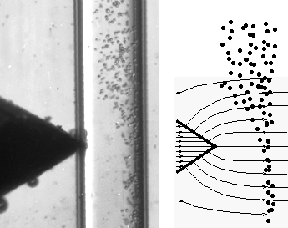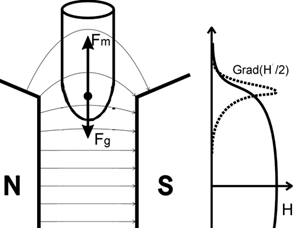Demonstration of High-Gradient Magnetic Fields:
The videos demonstrate:
Initial sedimentation and then upward movement of amyloplasts in an HGMF |
Lateral displacement of starch grains after insertion of a ferromagnetic wedge into a uniform magnetic field |
Behavior of statoliths in a Chara rhizoid in the presence and absence of a HGMF |

|

|

|
Sedimentation |
Wedge Effect |
Chara statoliths |
| High gradient magnetic field lift typically sedimenting starch grains. The magnetic field is provided by (switchable) electromagnets. Due to its size a magnetic gradient forms (symbolized by the curved field lines). Diamagnetic substances such as starch experience a repulsive force that causes upward movement. The particles sediment in the absence of the field but move upward as soon as the HGMF is switched on. The diameter of the capillary is about 0.3 mm. | The high gradient magnetic field is generated by inserting a ferromagnetic wedge between(permanent) magnets. The resulting magnetic gradient (symbolized by the field lines on the right) repels diamagnetic substances such as starch. The same principle applies to dense intracellular masses which move due to intracellular magnetophoresis. | The regular position of statolith in a Chara rhizoid. When the HGMF is switched on, the upward-directed force moves the statoliths away from the apex of the rhizoid. When the HGMF is switched off, the statoliths return to the original position. Measurements of the velocity of upward and downward movement are suitable to determine the viscoelastic properties of the cytoplasm of the apical area of the rhizoid. Depolymerization or stabilization of cytoskeletal elements enables the analysis of the cytoskeleton on statolith positioning. |
See High Gradient Magnetic Fields for a more physically oriented description.